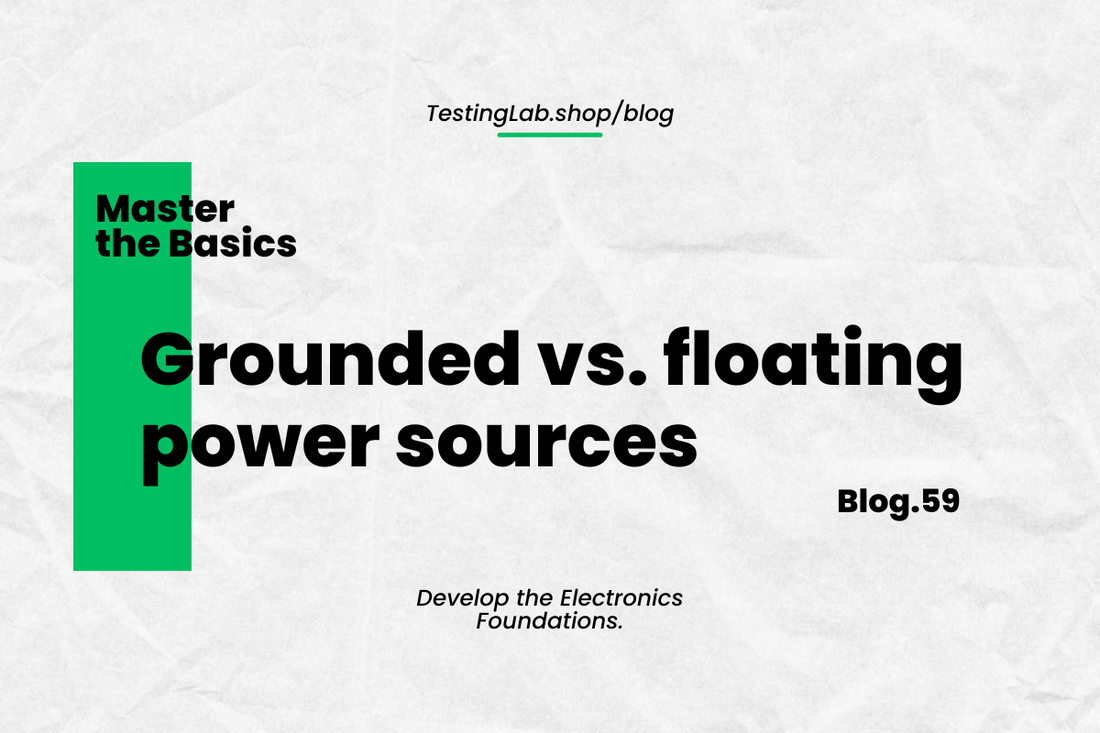
Master the Basics: Grounded vs. floating power sources
Share
In the world of electronics, understanding the difference between grounded and floating power sources is essential for safely building and troubleshooting circuits.
What Is a Grounded Power Source?
A grounded power source is electrically connected to the Earth. This connection provides a universal reference point known as Earth ground, commonly abbreviated as GND.
A good example is the AC wiring in your home, where one terminal is connected to ground. The Earth acts as a reference point for voltages in the system, ensuring consistency and safety across electrical devices.
What Is a Floating Power Source?
A floating power source is not electrically tied to Earth ground. Its voltages are measured relative to its own internal reference point, often labeled as COM (common).
A classic example is a battery:
- A AA battery provides 1.5V between its positive and negative terminals.
- Since it’s floating, the potential energy of the negative terminal (COM) is undefined with respect to Earth.
Over time, floating sources can drift in potential due to interaction with the ambient environment, causing unpredictable voltage levels relative to ground.
Why This Matters
If you have two batteries (or other floating sources) not connected to anything, their COM references may not be the same. One may be more charged than the other. But once you connect them together, the charges adjust, and they now share a common reference.
If you then connect this setup to a grounded power source, it becomes referenced to Earth ground and is no longer floating.
Important Warning: Don’t Mix Adapters
While it may seem tempting to combine two 5V wall adapters to make a 10V supply—don’t do it. Wall adapters are grounded to Earth, and connecting the 5V output of one adapter to the ground terminal of another creates a short circuit.
This will:
- Overload the adapter
- Cause permanent damage
- Possibly harm any connected devices
If you need more voltage, simply get a different power adapter rated for the correct output.
Conclusion
- Grounded sources use Earth as a reference and are tied to GND.
- Floating sources are not grounded and use their own internal COM.
- Floating sources can drift in potential but are safe to combine with each other.
- Never attempt to connect two grounded adapters together.